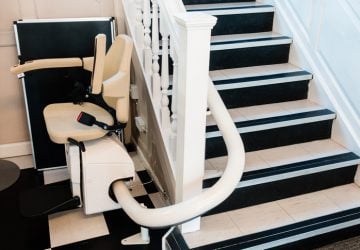- Published on
Mastering Stair Lift Repairs: Expert Tips for Fixing Frequent Problems
Mastering Stair Lift Repairs: Expert Tips for Fixing Frequent Problems
Regardless of how advanced machinery is, it can still face intermittent problems during use, and this includes stair lifts. Although certain malfunctions may require the help of an expert, many standard issues can be effectively managed through elementary troubleshooting steps. The following pointers aim to assist you in addressing and resolving some common difficulties encountered with stair lift operation.

Stair Lift Does Not Activate
When your stair lift refuses to operate, first verify the power supply. Confirm that it is connected to a power outlet and there are no tripped circuits in your fuse box. Some stair lifts are equipped with a key switch; make sure it is switched to the 'on' position. Should the problem not lie with the power, examine both the remote and built-in controls for any obvious signs of damage or batteries that might need replacing.
Unexpected Halting of Lift
If your lift comes to an unexpected stop while in use, an obstruction on the tracks could be the cause. Inspect the track for any items blocking the way and remove them. Many modern lifts have safety sensors designed to halt operation if an obstacle is detected. Additionally, check if the seat is in the correct position before operating; some models have a safety mechanism that only allows operation when the seat is properly aligned.
Excess Noise During Use
Ideally, a stair lift should run smoothly and quietly. If it starts making unusual sounds, it may suggest that certain parts need lubricating or are misaligned. Regular maintenance, including lubricating the track and components with the manufacturer's suggested products, is essential. Continuation of strange noises after this maintenance could indicate that it’s time for an expert to examine the lift.
Problems with Battery Performance
Stair lifts generally come with a battery backup system. If the lift seems sluggish or fails to hold a charge, the issue may be with the battery. Inspect the charging contacts to ensure they are clean and providing good electrical connection. Should the problem still occur after this, battery replacement might be necessary. Batteries typically need replacement every one to two years, depending on the frequency of use.
Inconsistent or Jolting Motion
A stair lift should glide smoothly; if it doesn't, this can be a sign of track issues, component wear, or a malfunction within the motor. Start by cleaning the track thoroughly and checking for any evident damage. If the motion remains uneven or jerky, seek the help of a technician to diagnose and fix the issue accurately. To sum up, while stair lifts are built to last and provide reliable service, they can still experience operational setbacks from time to time. With a foundational knowledge of troubleshooting steps, many of these problems can be swiftly managed, maintaining continual accessibility. Nonetheless, for intricate issues or when in doubt, safety should be your first consideration—seek the help of a professional. Regular upkeep and immediate response to any problems will not only prolong the service life of your stair lift but also guarantee a safe and comfortable ride for its users.